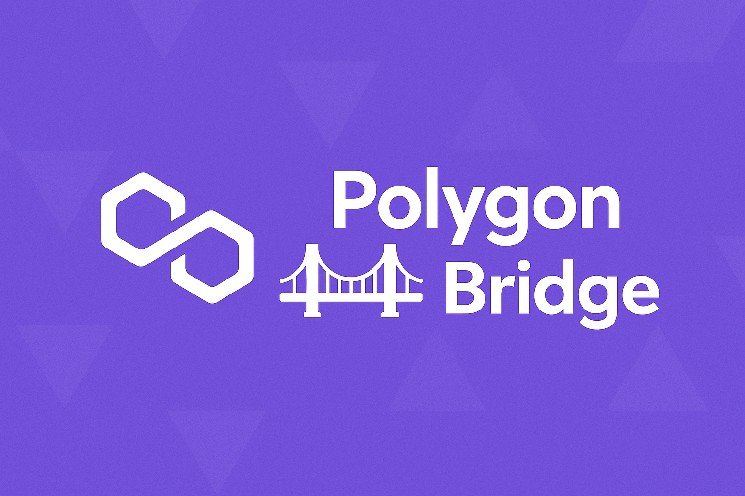- The Polygon Bridge enables individuals to transfer tokens into and out of Polygon and Ethereum quickly and securely.
- The bridge lowers gas costs, increases transaction speed, and enables access to DApps on both networks.
The Polygon Bridge is a cross-chain protocol that enables the transfer of tokens and other assets between the Ethereum mainnet and the Polygon network. The bridge is built to support interoperability in a decentralized ecosystem by enabling users to transfer Ether, ERC-20 tokens, and NFTs between Ethereum and Polygon seamlessly without the need for centralized intermediaries.
It also functions based on smart contracts, which are trustless and non-custodial. Polygon, as a Layer-2 scaling solution on Ethereum, uses this bridge to give users faster transactions and reduced costs without compromising the fundamental security of Ethereum.
What Is It Used For?
The main use case of the Polygon Bridge is to enable the bridging of asset migration between Ethereum and Polygon without restrictions. This is particularly significant to users interested in connecting to decentralized applications (DApps) on Polygon but who hold assets on Ethereum.
Since several popular DeFi players, including Aave, SushiSwap, and Curve, are already hosted on Polygon, this bridge will act as an entry point to the ecosystem. It is also at the forefront of propagating NFT trades, inter-chain DeFi approaches, and asset management competencies in a gas-effective way between networks. Developers and users can also enjoy the widespread ecosystem of Ethereum, but within a more cost-effective and scalable environment.
Why Use the Polygon Bridge?
The Ethereum network is characterized by high gas fees and congestion, particularly during peak usage times. Such problems may greatly affect the cost of transactions and the confirmation periods. Polygon network solves these issues and presents itself as a high-throughput, low-cost alternative alongside full Ethereum compatibility.
Users experience much faster speeds (up to 65,000 transactions per second with Polygon compared to the average of 14 through Ethereum). Such performance and transaction rates that can approach zero place the Polygon Bridge as an appealing option to anyone who is after speed and efficiency. Bridging tokens to Polygon provides more users access to a more diverse financial tools and services with increased speed and reduced cost.
How Does the Polygon Bridge Work?
The Polygon Bridge functions through a mechanism known as lock-and-mint, or burn-and-release, depending on the direction of the transfer. When a user initiates a transfer from Ethereum to Polygon, the original tokens are locked in a smart contract on Ethereum. In return, an equivalent amount of tokens is minted on the Polygon network.
This ensures that the total circulating supply remains constant across both chains. When assets are moved back to Ethereum, the process is reversed: the tokens on Polygon are burned, and the locked tokens on Ethereum are released to the user’s wallet. This model supports both security and asset parity between chains.
Polygon currently offers two types of bridges to accommodate different user needs. The Proof-of-Stake (PoS) Bridge is the most widely used, allowing the transfer of Ether and most ERC tokens. It provides instant deposits and reasonably fast withdrawal times, ranging from 45 minutes to three hours.
In contrast, the Plasma Bridge is focused on security and uses Ethereum’s Plasma scaling model. Although it supports fewer token types, it offers a more secure transfer option, with withdrawal times that can take up to seven days. Each bridge type has its own strengths, and users can choose depending on whether they prioritize speed or security.
Advantages of Using the Bridge
The Polygon Bridge offers several clear benefits for both casual users and developers. It significantly reduces the cost of interacting with decentralized applications by eliminating Ethereum’s high gas fees.
Transactions are processed faster, allowing for a smoother user experience, especially for applications that require frequent interactions like trading or gaming. The bridge also supports a wide range of token standards, making it versatile for both fungible and non-fungible assets.
Developers benefit from Polygon’s compatibility with the Ethereum Virtual Machine (EVM), allowing them to deploy applications without rewriting smart contracts. For users, the bridge creates access to the full range of services on both Ethereum and Polygon, without sacrificing asset custody or liquidity.
Risks and Limitations
Despite its strengths, using the Polygon Bridge is not without risks. Smart contract vulnerabilities can expose users to asset loss if the protocol is exploited. Interoperability between chains adds complexity, and technical issues may delay or even fail transactions. Liquidity concerns may also arise when attempting to quickly move large amounts of tokens.
Furthermore, cross-chain bridges are still evolving, and their security has been a target in past high-profile exploits. Users should also remain aware of regulatory changes that could affect the availability or legality of bridging services in some regions. It’s essential to understand these risks and use secure, audited bridges when conducting transfers.
Read the full article here










